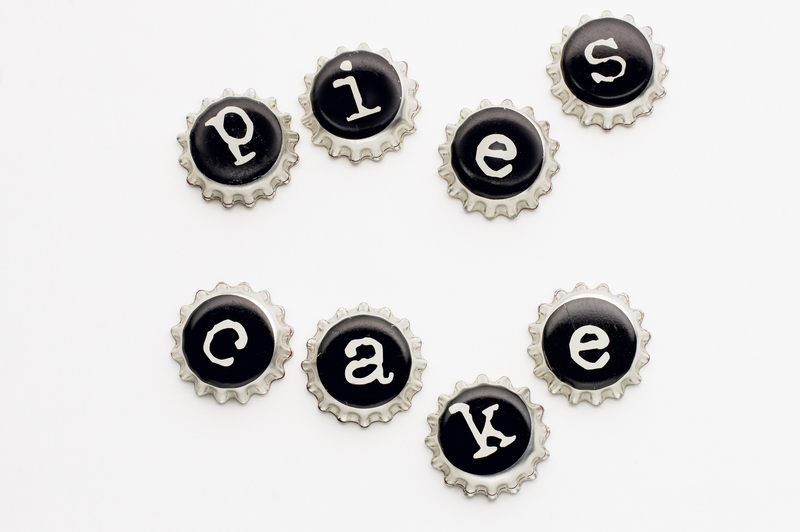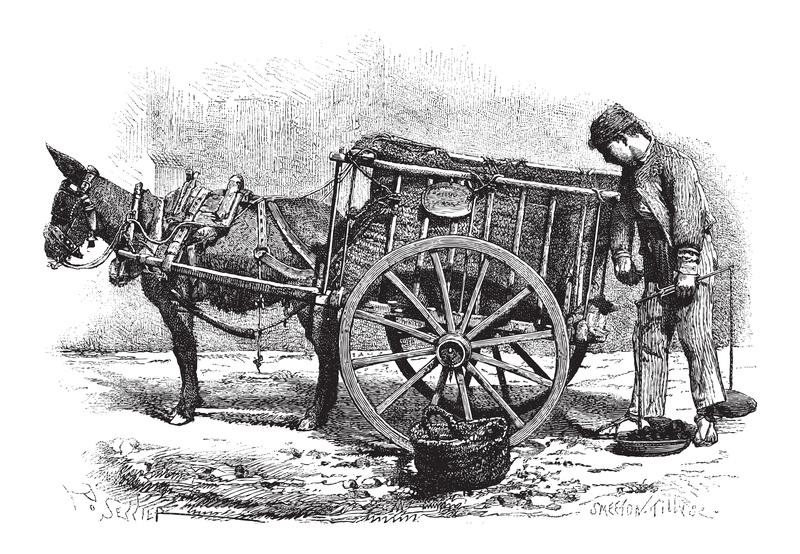Reduce Your Expenses When Removing Bulky Household Items
Are you moving, redecorating, or simply tidying up your living space? If so, you may be facing the challenge of disposing of large, unwanted furniture or appliances. Whether you are parting ways with that old sofa, a broken refrigerator, or piles of outdated electronics, the costs associated with bulky household item removal can quickly add up. But don't worry! This comprehensive guide will show you how to minimize expenses when removing bulky household items. Save money, conserve resources, and make the process smoother with our actionable tips and clever strategies.

Understanding the Costs of Bulky Item Disposal
Before we explore money-saving strategies, it's important to understand why bulky item removal can get expensive. Companies typically charge not just for labor, but also for transportation, disposal fees, and in some cases, environmental surcharges. Factors influencing the expense include:
- Item weight and size
- Number of items to be removed
- Accessibility (stairs, elevators, distance from the curb)
- Disposal location (city dumping fees, recycling center costs, etc.)
- Special handling (hazardous components, electronics, etc.)
With these costs in mind, the following strategies will help you lower your expenses when getting rid of bulky items.
Plan Ahead and Declutter Smartly
Why Planning Matters
A well-thought-out removal plan ensures you don't incur unnecessary expenses. Rushed cleanouts often result in higher costs due to last-minute bookings or overlooked donation options. Begin by taking inventory of the items you wish to remove. Do any still have value? Can any be reused, recycled, or sold?
Sort Items by Category
- Donate: Furniture or appliances in usable condition.
- Recycle: Electronics, metal, and certain plastics.
- Sell: High-value items on local marketplaces.
- Dispose: Broken, unusable, or hazardous items.
Tip: Combine removal with your periodic deep clean-out or before moving to save on both time and labor.
Leverage Free and Low-Cost Disposal Solutions
1. Municipal Bulky Item Pickup Programs
Many city and county governments offer free or low-cost bulky waste pickup services for residents. These programs typically occur on a scheduled basis and cover common items like mattresses, sofas, and large appliances.
- Visit your city's waste management website for details.
- Follow guidelines for item size, weight, and acceptable materials.
- Book your slot in advance--spaces can fill up quickly.
Note: Some municipalities may impose fees for specific types of items, such as tires or appliances containing refrigerants.
2. Take Advantage of Community Drop-Off Events
Many areas host bulk item drop-off weekends where residents can leave large, unwanted items at designated locations for little to no fee. These events often accept:
- Old furniture and mattresses
- Large electronics
- Scrap metal
- Appliances and more
Check social media or neighborhood boards for event announcements.
3. Use Freecycle and Online Gifting Platforms
Why pay to dispose of something that someone else might need? Platforms like Freecycle, Facebook Marketplace, and Craigslist's "Free" section allow you to list your bulky household items for free pickup. This is a win-win: someone gets a useful item, and you save money and effort.
- Take clear photos and mention if help is needed for lifting or transport.
- Coordinate contactless pickup whenever possible.
DIY Removal: When Doing It Yourself Pays Off
Renting a Truck or Trailer
Transporting bulky items yourself can shave off a significant portion of the cost versus hiring professionals. Renting a pickup truck or trailer from local home improvement stores is often more affordable, especially if you already have help.
- Enlist friends or family -- offer pizza or a small favor in return.
- Follow safety precautions when lifting or moving heavy objects.
- Use straps and blankets to protect both items and your vehicle.
Drop-Off at Recycling or Transfer Stations
Many regional waste management and recycling centers accept large household items for little or no cost from residents, especially if you separate recyclables from pure trash.
- Check for operating hours and any item restrictions.
- Some centers require proof of residency, like a utility bill.
Skipping the pickup service fee and delivering items yourself is often much cheaper.
Disassemble Before Removal
Reducing large items to smaller parts makes transport easier and can sometimes lower disposal fees. For example:
- Break down bedframes and modular furniture.
- Remove doors from appliances.
- Compress items like mattresses (using a vacuum storage bag).
Why? Most disposal and recycling centers charge by volume (cubic feet), not just weight. Smaller pieces make a difference.
Sell or Donate to Reduce Removal Expenses
Sell Locally
Online marketplaces (such as Facebook Marketplace, OfferUp, and Nextdoor) are ideal for selling items that are in good to excellent condition. This not only eliminates disposal costs but may also earn you some cash.
- Be honest about wear and tear.
- Consider offering delivery for a fee if you have a truck.
- Price items to move quickly if you're on a deadline.
Donate to Local Charities
Many nonprofit organizations accept gently used large household furnishings and sometimes offer free pickup. These include:
- Habitat for Humanity ReStores
- Salvation Army
- Local homeless or domestic violence shelters
Before donating, call to check current needs, acceptable items, and pickup policies. Obtain a receipt to deduct your donation on your taxes, offering you the added benefit of reducing your taxable income.
Minimize Costs with Shared Removal Services
Share Removal Services with Neighbors
If several homes in your neighborhood need to clear out large items, coordinate and book a removal service together. Many companies offer reduced rates for bulk or grouped pickups since it cuts down travel time and overhead.
- Coordinate a date that works for everyone.
- Negotiate group discounts and split the total cost.
- Use neighborhood apps or boards to gather participants.
Use Community Dumpster Rentals
Renting a dumpster with a group is far more economical than ordering one for yourself. For larger-scale cleanouts (such as HOA events or moving out of multi-unit buildings), a shared dumpster rental can reduce cost per participant significantly.
Compare Quotes from Multiple Removal Companies
If you need to hire professionals, never settle for your first quote. Different removal companies have varying fee structures, minimum charges, and additional fees for stairs or complex pickups. Here's how to optimize your spending:
- Request quotes from at least three local companies and ask for all pricing details (including surcharges).
- Check reviews and references to ensure reliability and avoid hidden costs.
- Ask about discounts for seniors, military, or first-time customers.
- Bundle services (if you also need moving or cleaning) for additional savings.
_Comparing helps you find the best service at the lowest price--and keeps you from being surprised by unexpected fees._
Reduce Environmental and Disposal Fees
Recycle Responsibly
- Many local recycling centers accept large appliances (refrigerators, washing machines, etc.) for free or a low fee, especially if you remove hazardous materials first.
- Electronics recycling events often occur throughout the year--check with your municipality or local retailers.
- Scrap yards may offer cash for metal components, putting money back into your pocket.
Dispose of Hazardous and Special Materials Properly
Items like mattresses, old paint, refrigerants, or batteries often incur higher disposal fees. Luckily, some manufacturers offer take-back programs or recycling promotions for mattress returns, appliance trade-ins, or electronics drop-off. _Research these options to avoid penalty fees._
Embrace Repurposing and Upcycling
Sometimes, what appears to be trash can become treasure through creative repurposing. Consider these upcycling ideas before paying to haul something away:
- Turn an old door into a garden table.
- Reimagine broken chairs as outdoor plant stands.
- Use dresser drawers as under-bed storage or shelves.
This not only saves you on removal costs but also benefits the environment and adds unique flair to your home.

Final Tips for Saving Money on Bulky Household Item Removal
- Always check if there's a roadside or curbside pickup day in your area before scheduling paid removal services.
- Invest in tools that make breaking down or moving heavy items easier (dollies, lifting straps, etc.).
- If you live in an apartment, check in advance if the building covers any removal costs or offers annual "clean-out" events.
- Plan for the right time: Spring and early summer are busy moving seasons, so pricing may be higher. Off-peak removal can result in better deals.
Conclusion: Going Green and Saving Green
Learning how to reduce your expenses in bulky item disposal is not just about saving money -- it's also about making responsible decisions for your home, your community, and the environment. By leveraging free municipal pickup, selling or donating usable items, doing your own hauling, and comparing professional quotes, you can manage your home's transition smoothly and affordably.
Don't let the hassle or cost of removing bulky household items overwhelm you. With the strategies outlined above, you'll find that shedding clutter can be an opportunity to save money, get creative, and even help others in your community. Start planning today, and enjoy a cleaner and more spacious home without breaking the bank!
